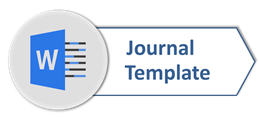Lampungnese Connotative Meaning
Abstract
A pair of a word can have similar denotative meanings but it does not mean their meaning are identically the same. In a certain tendency, such as emotion, technique, or situation, they are possibly different. So, the meaning can be different. The type of difference is called connotative meaning. The understanding of connotative meaning is remarkable since choosing inappropriate words leads to ineffective communication. This study examines the connotative meaning of words in Lampungnese, a language that has contact with other languages in a culturally diverse region, Lampung province. By this study, Lampungnese speakers, both native and non-native can choose the word accurately to then effective communication can be achieved. In this study, data were taken from a direct observation of Lampungnese natural interaction among the natives by the researcher. Next, the researcher applied interviews with twenty 50 years old Lampungnese natives to find out the specific tendency of each datum. After that, a natural social experiment is conducted to reach the respond of Lampungnese while listening to the word given so then the finding will be more accurate. From the efforts mentioned, it was found some pairs of words are denotatively the same and connotatively different. As additional information, they exist in various contexts of communication, such as intelligent quality, feeling, situation, politeness, and activities.
Full Text:
PDFReferences
Antika, T. R., Ningsih, N., & Sastika, I. 2020. Analisis Makna Denotasi, Konotasi, Mitos pada Lagu “Lathi” Karya Weird Genius. Asas: Jurnal Sastra, Vol 9 (2), 61-71.
Badan Pusat Statistik Provinsi Lampung. 2020. Statistik Daerah Provinsi Lampung 2020. Lampung: CV. Jaya Wijaya. Retrieved from Statistik Daerah Provinsi Lampung 2020.
Brenner, J. 2005. Memadu Metode Penelitian Kualitatif & Kuantitatif. Yogyakarta: Pustaka Pelajar.
Chaer, A. 2013. Pengantar Semantik Bahasa Indonesia. Jakarta: Rineka Cipta.
Dickins, J. 2019. Types of Connotative Meaning, and Their Significance for Translation . In S. Faiq, Discourse in Translation (pp. 135-162). Oxon: Routledge.
Dickins, J., Hervey, S., & Higgins, I. 2016. Thinking Arabic Translation (2nd Edition). London: Routledge.
Dishar, I. S., & Hammadi, I. R. 2016. Denotative and Connotative Meanings in the Holly Text (Surat Al-Baqara) Using Lewis' Method of Meaning Analysis, Vol 30. Misan Journal for Academic Studies, 71-87.
Efransyah. 2020. Connotative Meaning in the Proverbs of the Besemah Language (A Sematic Study). Project Professional Journal of English Education, Vol 3 (1), 143-148.
Jayanti, D., Asridayanti, & Afrilesa, R. 2019. A Connotative Meaning Analysis of Journalistic Language on Tribunnews online.com (Politic Issues), Vol. 4 (1). Krinok: Jurnal Linguistik Budaya, 1-11.
Leech, G. 1981. Semantics the Study of Meaning. London: Pinguin Books.
Lestari, I., & Nitisar, D. 2022. Denotative and Connotative Meaning in Lyric “Mockingbird” Song by Eminem. Jushpen Jurnal Sosial Humaniora dan Pendidikan, 20-26.
Mulyadi, M. 2013. Penelitian Kuantitatif Dan Kualitatif Serta Pemikiran Dasar Menggabungkannya. Jurnal Studi Komunikasi Dan Media, Vol 15 (1), 127-136.
Omar, Y. 2012. The Challenges of Denotative and Connotative Meaning for Second Language. ETC, 324-251.
Purnamasari, I. 2018. An Analysis of Connotative Meaning on Justin Bieber’s Song Lyrics. Pioneer, Vol 10 (2), 156 -169.
Reranta, R. C. 2021. Comparison of Declarative-Interrogative Intonation in Lampungnese. Teknosastik, Vol 19 (31), 31-41.
Sanusi, E. 2006. Tata Bahasa Lampung. Lampung: Universitas Lampung.
Sharma, S., & Sharma, R. 2015. Effective Communication. SRJIS, Vol. 3 (17), 3151-3156.
Subroto, E. 2011. Pengantar Studi Semantik dan Pragmatik. Surakarta: Cakrawala Media.
Yule, G. 2006. The Study of Language. Cambridge: Cambridge University Press.
Zaluchu. 2020. Strategi Penelitian Kualitatif dan Kuantitatif di dalam Penelitian Agama. Evangelikal: Jurnal Teologi Injili Dan Pembinaan Warga Jemaat, Vol 4 (1), 28–38.
DOI: https://doi.org/10.33365/ts.v21i1.2360
Refbacks
- There are currently no refbacks.
Copyright (c) 2023 Redika Cindra Reranta

This work is licensed under a Creative Commons Attribution-ShareAlike 4.0 International License.
Teknosastik: Jurnal Bahasa dan Sastra
Publisher: Universitas Teknokrat Indonesia
Address: Zainal Abidin Pagaralam Street 9-11, Bandar Lampung, Indonesia
Website: https://ejurnal.teknokrat.ac.id/index.php/teknosastik/index

Creative Commons Attribution-ShareAlike 4.0 International License






